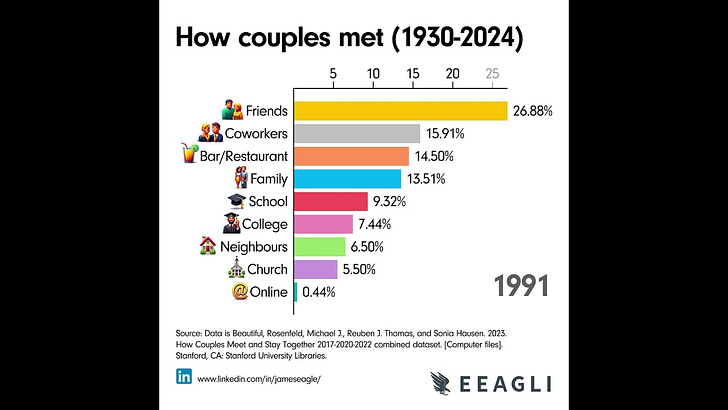Exponential social change is rare in my research on modern America. Most social trends move steadily, almost linearly. We’re stubborn apes, I guess. But this topic—how couples meet—has driven a historically unprecedented mass shift in how romantic couples meet in the last 15 years alone.
For the record, I met my wife in a bar/music venue during a fundra…
Keep reading with a 7-day free trial
Subscribe to Homo Imaginari to keep reading this post and get 7 days of free access to the full post archives.




